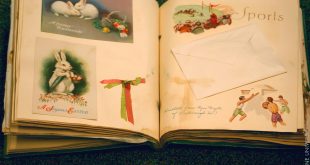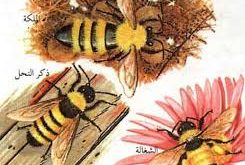Process
An open and curious mind enables one to see beyond what is known.
Seeing a new possibility,
a new connection or relationship can spark an invention.
Inventive thinking frequently involves combining concepts or elements from different realms that would not normally be put together.
Sometimes inventors skip over the boundaries between distinctly separate territories or fields.
Ways of thinking,
materials,
processes or tools from one realm are used as no one else has imagined in a different realm.
Play can lead to invention.
Childhood curiosity like playing in a sand box,
experimentation and imagination can develop one’s play instinct—an inner need according to Carl Jung.
Inventors feel the need to play with things that interest them,
and to explore,
and this internal drive brings about novel creations.[2] Thomas Edison: “I never did a day’s work in my life,
it was all fun”.
Inventing can also be an obsession.
To invent is to see anew.
Inventors often envision a new idea,
seeing it in their mind’s eye.
New ideas can arise when the conscious mind turns away from the subject or problem; or when the focus is on something else; or even while relaxing or sleeping.
A novel idea may come in a flash – a Eureka!
moment.
For example,
after years of working to figure out the general theory of relativity,
the solution came to Einstein suddenly in a dream “like a giant die making an indelible impress,
a huge map of the universe outlined itself in one clear vision”.[3] Inventions can also be accidental,
such as in the case of polytetrafluoroethylene (Teflon).
Insight is also a vital element of invention.
It may begin with questions,
doubt or a hunch.
It may begin by recognizing that something unusual or accidental may be useful or that it could open a new avenue for exploration.
For example,
the odd ****llic color of plastic made by accidentally adding a thousand times too much catalyst led scientists to explore its ****l-like properties,
inventing electrically conductive plastic and light emitting plastic-—an invention that won the Nobel Prize in 2000 and has led to innovative lighting,
display screens,
wallpaper and much more (see conductive polymer,
and organic light-emitting diode or OLED).[4] Invention is often an exploratory process,
with an outcome that is uncertain or unknown.
There are failures as well as successes.
Inspiration can start the process,
but no matter how complete the initial idea,
inventions typically have to be developed.
Inventors believe in their ideas and they do not give up in the face of one or many failures.
They are often famous for their perseverance,
confidence and passion.
Inventors may,
for example,
try to improve something by making it more effective,
healthier,
faster,
more efficient,
easier to use,
serve more purposes,
longer lasting,
cheaper,
more ecologically friendly,
or aesthetically different,
e.g.,
lighter weight,
more ergonomic,
structurally different,
with new light or color properties,
etc.[5] Or an entirely new invention may be created such as the Internet,
email,
thetelephone or electric light.
Necessity may be the mother of invention,
invention may be its own reward,
or invention can create necessity.
Nobody needed a phonograph before Edison invented it,
the need for it developed afterward.
Likewise,
few ever imagined the telephone or the airplane prior to their invention,
but many people cannot live without these inventions now.[6] The idea for an invention may be developed on paper or on a computer,
by writing or drawing,
by trial and error,
by making models,
by experimenting,
by testing and/or by making the invention in its whole form.
As the dialogue between Picasso and Braque brought about Cubism,
collaboration has spawned many inventions.
Brainstorming can spark new ideas.
Collaborative creative processes are frequently used by designers,
architects and scientists.
Co-inventors are frequently named on patents.
Now it is easier than ever for people in different ********s to collaborate.
Many inventors keeprecords of their working process – notebooks,
photos,
etc.,
including Leonardo da Vinci,
Thomas Jefferson and Albert Einstein.[7] In the process of developing an invention,
the initial idea may change.
The invention may become simpler,
more practical,
it may expand,
or it may even morph into something totally different.
Working on one invention can lead to others too.
There is only one country in the world that will grant patent rights for an invention that continues part of an invention in a previously filed patent—the United States.[8] The creation of an invention and its use can be affected by practical considerations.
Some inventions are not created in the order that enables them to be most useful.
For example,
the parachute was invented before powered flight.[9] There are inventions that are too expensive to produce and inventions that require scientific advancements that have not yet occurred.[10] These barriers can erode or disappear as the economic situation changes or as science develops.
But history shows that turning an invention that is only an idea into reality can take considerable time,
even centuries as demonstrated by inventions originally conceived by Leonardo da Vinci which are now in physical form and commonplace in our lives.[11] Interestingly,
some invention that exists as only an idea and has never been made in reality can obtain patent protection.[12] An invention can serve many purposes,
these purposes might differ significantly and they may change over time.
An invention or a further developed version of it may serve purposes never envisioned by its original inventor(s) or even by others living at the time of its original invention.
As an example,
consider all the kinds of plastic developed,
their innumerable uses,
and the tremendous growth this material invention is still undergoing today.[13]
Artistic invention
Inventive thinking has always played a vital role in the creative process.
While some inventions in the arts are patentable,
others are not because they cannot fulfill the strict requirements governments have established for granting them.
(see patent).
Art,
design and architecture
Art is continuously reinvented.
Many artists,
designers,
and architects think like inventors.
As they create,
they may: explore beyond that which is known or obvious,
push against barriers,
change or discard conventions,
and/or break into new territory.
Breaking the rules became the most valued attribute in art during the 20th century,
with the highest acclaim going to conceptual innovation which frequently involved the invention of new genres.
For the first time the idea within the artwork was unmistakably more important than the tangible art object.
All kinds of artists have been inventing throughout history,
and among their inventions are important contributions to visual art and other fields.
Some visual artists like Picasso become inventors in the process of creating art.
Inventions by other artists are separate from their art,
such as the scientific inventions of Leonardo da Vinci.
Some inventions in visual art employ prior developments in science or technology.
For example,
Picasso and Julio Gonzalez used welding to invent a new kind of sculpture,
the form of which could be more open to light and air,
and more recently,
computer software has enabled an explosion of invention in visual art,
including the invention of computer art,
and invention in photography,
film,
architecture anddesign.
Like the invention of welded sculpture,
other inventions in art are new mediums,
new art forms,
or both.
Examples are: the collage and the construction invented by Picasso,
the Readymadeinvented by Marcel Duchamp,
the mobile invented by Alexander Calder,
the combine invented by Robert Rauschenberg,
the shaped painting invented by Frank Stella,
and the motion picture,
the invention of which is attributed to Eadweard Muybridge.[15] Art has been reinvented by developing new processes of creation.
For example,
Jackson Pollock invented an entirely new form of painting and a new kind of abstraction by dripping,
pouring,
splashing and splattering paint onto unstretched canvas laying on the floor.
A number of art movements were inventions often created collaboratively,
such as Cubism invented by Picasso and Braque.
Substantial inventions in art,
design and architecture were made possible by inventions and improvements in the tools of the trade.
The invention ofImpressionist painting,
for example,
was possible because the prior invention of collapsible,
resealable ****l paint tubes facilitated spontaneous painting outdoors.
Inventions originally created in the form of artwork can also develop other uses,
as Alexander Calder’s mobile is commonly used over babies’ cribs today.
Funds generated from patents on inventions in art,
design and architecture can support the realization of the invention or other creative work.
Frederic Auguste Bartholdi’s 1879 patent on the Statue of Liberty helped fund the statue currently in New York harbor because it covered small replicas.[16] Among other artists,
designers and architects who are or were inventors are: Filippo Brunelleschi,
Le Corbusier,
Naum Gabo,
Frederick Hart,
Louis Comfort Tiffany,
John La Farge,
Buckminster Fuller,Walt Disney,
Man Ray,
Yves Klein,
Henry N.
Cobb,
I.
M.
Pei,
Kenneth Snelson,
Helen Frankenthaler,
Chuck (Charles) Hoberman and Ingo Maurer.
Some of their inventions have been patented.
Others might have fulfilled the requirements of a patent,
like the Cubist image.
There are also inventions in visual art that do not fit into the requirements of a patent.
Examples are inventions that cannot be differentiated from that which has already existed clearly enough for approval by government patent offices,
such as Duchamp’s Readymade and other conceptual works.
Invention whose inventor or inventors are not known cannot be patented,
such as the invention of abstract art or abstract painting,
oil painting,
Process Art,
Installation art and Light Art.
Also,
when it cannot or has not been determined whether something was a first in human history or not,
there may not be a patentable invention even though it may be considered an invention in the realm of art.
For example,
Picasso is credited with inventing collage though this was done earlier in cultures outside of the western world.
Inventions in the visual arts that may be patentable might be new materials or mediums,
new kinds of images,
new processes,
novel designs,
or they may be a combination of these.
Inventions byFilippo Brunelleschi,
Frederick Hart,
Louis Comfort Tiffany,
John La Farge,
Walt Disney,
Henry N.
Cobb,
Chuck (Charles) Hoberman and others received patents.
The color,
International Klein Blueinvented by Yves Klein was patented in 1960 and used two years later in his sculpture.
Inventions by Kenneth Snelson which are crucial to his sculptures are patented.
R.
Buckminster Fuller’s famousgeodesic dome is covered in one of his 28 US patents.
Ingo Maurer known for his lighting design has a series of patents on inventions in these works.
Many inventions created collaboratively by designers at IDEO Inc.
have been patented.
Countless other examples can easily be found by searching patents at the websites of the Patent Offices of various countries,
such ashttp://www.USPTO.gov.
Inventions in design can be protected in a special kind of patent called a “design patent”.
The first design patent was granted in 1842 to George Bruce for a new font.[17] See a database of patents in the arts at Patent Database.
See images and text from some patents in the arts at Patent Images Gallery.[18][19][20]
Music
Timeline – dates may be approximations
5000 BCE – The first flutes were made in India out of wood.
3000 BCE – The first string instrument,
the guqin was invented in China.
619 – The orchestra was invented in the Chinese royal courts with hundreds of musicians.
855 – Polyphonic music was invented.[citation needed] 910 – The musical score was invented by the musician,
Hucbaldus.
He also invented a staff that had an indefinite number of lines.
1025 – Musical notes were invented by Guido of Arezzo,
named UT,
RE,
MI,
FA,
SO and LA.
Later in the 16th century UT was changed to DO and TI was added.
Lines/staves to space printed notes were added then too.
1225 – Rounds,
songs sung in harmony,
were invented with the song,
Sumer is icumen in by John of Fornsete,
an English monk.
1607 – A tonal system that gave the recitative a more flexible accompaniment was invented,
revolutionizing music in the first opera masterpiece,
Orfeo,
by Claudio Monteverdi,
a composer,
musician and singer.
1696 – The metronome,
a device for beating time was invented by Etienne Loulie,
a musician,
pedagogue and musical theorist.[21] 1698-1708 – The piano was invented by Bartolomeo Cristofori[22] 1787 – Algorithmic music was invented by Amadeus Mozart with his Musikalisches Wurfelspiel.
1829 – The accordion,
a portable reed instrument was invented by Damian.
1835 – The tuba[1] proper was first patented by Prussian bandmaster Wilhelm Wieprecht and German instrument-builder Johann Gottfried Moritz.
1841 – The saxophone was invented by Adolphe Sax,
an instrument maker.
1880 – Tango music was invented by the Argentinians,
combining African,
Indian and Spanish rhythms.
1919 – The first electronic music instrument,
the theremin was invented by Lev Theremin.
It is played by moving hands near an antenna.
1922 – Muzak,
engineered music without vocals,
tempo changes or brass instruments was invented by Brig.
General George Owen Squier.[23] 1932 – The electric guitar,
the Frying pan was invented by George Beauchamp
1953 – Rock and Roll was invented by the musician,
Bill Haley with Crazy Man Crazy combining guitars,
saxophones,
piano,
bass,
and snare drums,
who was imitating African American musicians such as Chuck Berry.
1957 – Computer-assisted musical composition was invented with Illiac Suite for String Quartet by scientists at the University of Illinois in Urbana.[24] 1964 – The Moog Synthesizer was invented by Robert Moog.[25] 1974 – The Chapman Stick was invented by Emmett Chapman.
Literature
Timeline – dates may be approximations
1950 BC – The novel was invented with a narrative form.
This was Story of Sinuhe about a prince of Egypt who flees after a court killing,
is saved in the desert by a Bedouin tribe,
and marries the eldest daughter of a king.
Some people see Story of Sinuhe as the precursor of the story of Moses in the Bible.
675 BC – The heroic ballad was invented by Stesichorus of Sicily.
553 – Scandal literature was invented by Procopius in Anecdota.
808 – Copying written works by printing was invented by the Chinese who created The Diamond Sutra a seven page paper scroll,
printed with woodblocks.
1022 – The romance novel was invented by Murasaki Shikibu,
a Japanese noblewoman who wrote Genji the Shining One.
1657 – The science fiction novel was invented by Savinien Cyrano de Bergerac who wrote Les etas et empires de la lune about a trip to the moon.
1816 – Literary horror was invented by Mary ****ley who wrote Frankenstein.
1843 – The mystery novel was invented by Edgar Allan Poe who wrote “The Gold-Bug”.
1857 – Writing in which the author conceals a single narrator’s perspective and uses multiple other points of view was first done by Gustav Flaubert in Madame Bovary.
1895 – The serial comic strip was invented by the publisher,
Joseph Pulitzer with The Yellow Kid,
in the New World Newspaper.[26]
Performing arts
“You start to lose your memory,
your confidence,
your invention.
So that’s pretty much a closed book for me”.[27]
Works by Martha Graham and many other artists known for invention.[28] Timeline – dates may be approximations
450 BCE – Mime was invented by Sophron of Syracuse.
1597 – Opera was invented by Jacopo Peri with Dafne.
Peri was an Italian composer and singer.
1780 – Bolero dance was invented by Sebastiano Carezo,
a Spanish dancer.
1833 – Minstrel shows were invented by Thomas Dartmouth “Daddy” Rice.
1880 – Tango dance was invented by the Argentinians,
combining African,
Indian and Spanish rhythms.
1922 – Radio drama was invented as Eugene Walter’s play,
The Wolf was broadcast by WGY,
a station in Schenectady,
New York.
WGY later created a whole radio show,
The WGY Players that presented radio adaptations of popular plays.[29] 1993 – a system that allows the wearer of specially designed shoes to lean forward beyond his center of gravity and appear to defy gravity was invented and patented by Michael Jackson,
Michael Bush,
and Dennis Tompkins.
Michael Jackson used it in performances.
Refer to US Patent No.
5,255,452.
Implementation
Some are sold,
licensed or given away as products or services.
Simply exhibiting visual art,
playing music or having a performance gets many artistic inventions out into the world.
Believing in the success of an invention can involve risk,
so it can be difficult to obtain support and funding.
Grants,
inventor associations,
clubs and business incubatorscan provide the mentoring,
skills and resources some inventors need.
Success at getting an invention out into the world often requires passion for it and good entrepreneurial skills.[30] In economic theory,
inventions are one of the chief examples of “positive externalities”,
a beneficial side-effect that falls on those outside a transaction or activity.
One of the central concepts of economics is that externalities should be internalized—unless some of the benefits of this positive externality can be captured by the parties,
the parties will be under-rewarded for their inventions,
and systematic under-rewarding will lead to under-investment in activities that lead to inventions.
The patent system captures those positive externalities for the inventor or other patent owner,
so that the economy as a whole will invest a more-closely-optimum amount of resources in the process of invention.
Invention in patent law
This section does not cite any references or sources.
Please help improve this article by adding citations to reliable sources.
Unsourced material may be challenged and removed.
(February 2024)
The legal invention concept is central in patent law.
As is often the case for legal concepts,
its meaning is slightly different from common parlance meaning.
A further complication is that the invention concept is quite different in American and European patent law.
In Europe,
the first test patent applications are submitted to is: “is this an invention”? If it is,
subsequent questions to be answered are whether it is new,
and sufficiently inventive.
The implication – rather counterintuitively – is that a legal invention is not inherently novel.
Whether a patent application relates to an invention is governed by Article 52 of the European Patent Convention,
that excludes e.g.
discoveries as such and software as such.
The EPO Boards of Appeal have decided that the technical character of an application is decisive for it to be an invention,
following an age-old German tradition.
British courts don’t agree with this interpretation.
Following a 1959 Australian decision (“NRDC”),
they believe that it is not possible to grasp the invention concept in a single rule.
A British court once stated that the technical character test implies a “restatement of the problem in more imprecise terminology”.
In the United States,
all patent applications are considered inventions.
The statute explicitly says that the American invention concept includes discoveries (35 USC § 100(a)),
contrary to the European invention concept.
The European invention concept corresponds to the American “patentable subject matter” concept: the first test a patent application is submitted to.
While the statute (35 USC § 101) virtually poses no limits to patenting whatsoever,
courts have decided in binding precedents that abstract ideas,
natural phenomena and laws of nature are not patentable.
Various attempts were made to substantiate the “abstract idea” test,
which suffers from abstractness itself,
but eventually none of them was successful.
The last attempt so far was the “machine or transformation” test,
but the U.S.
Supreme Court decided in 2024 that it is merely an indication at best.
Invention and innovation
- برجراف materials and designs
- برجراف باللغه الانجليزيه عن الاختراعات الحديثه
- برجراف عن الاختراعات الحديثة
- برجراف عن MAKING MODELS
- برقراف عن sand art












